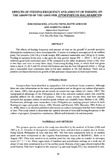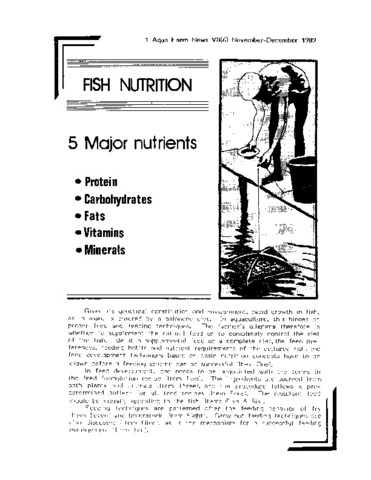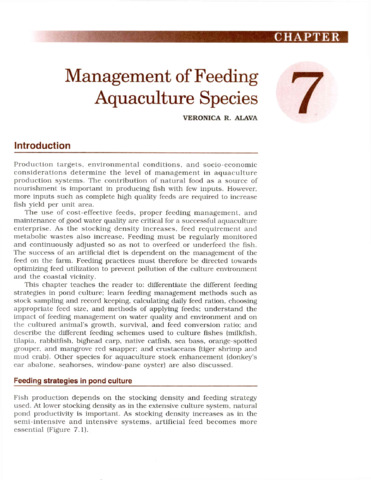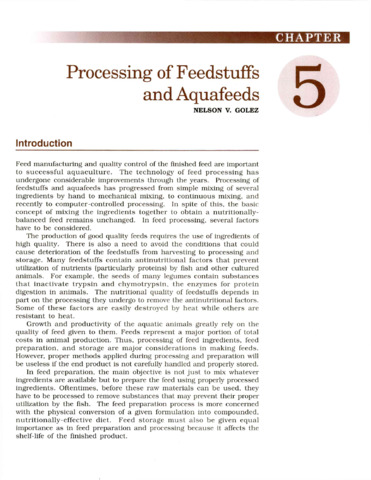Effects of feeding frequency and amount of feeding on the growth of the grouper, Epinephelus malabaricus
Share
นามธรรม
The effects of feeding frequency and amount of food on the growth of juvenile groupers (Epinephelus malabaricus) were investigated for 12 weeks of rearing in net-cages set in an earthen pond. The juveniles (110-130 g in body weight, BW) attained marketable size (500 g) in 12 weeks. Feeding to satiation levels once a day gave the best growth (mean BW = 509.4 ± 56.5 g) and relatively good food conversion ratio (4.78) compared to the other treatments (twice a day, once in two days and once in every three days). Concerning feeding levels, in which feed was given twice a day at 15, 10, 5 and 1% of total fish biomass per day, the best fish growth (426.6 ± 54.0 g) and a reasonable food conversion ratio (4.53) were obtained at 5% fish biomass. There was a positive correlation between the growth of fish and water temperature in both experiments.
การอ้างอิง
Kohno, H., Triño, A., Gerochi, D., & Duray, M. (1989). Effects of feeding frequency and amount of feeding on the growth of the grouper, Epinephelus malabaricus. Philippine Journal of Science , 118(1), 89-100. http://hdl.handle.net/10862/1298
เรื่อง
คอลเลกชัน
- AQD Journal Articles [1249]
รายการที่เกี่ยวข้อง
แสดงรายการที่เกี่ยวข้องตามชื่อผู้แต่งผู้สร้างและเรื่อง
-
Fish nutrition
Carreon-Lagoc, Julia; Southeast Asian Fisheries Development Center, Aquaculture Department (Aquaculture Department, Southeast Asian Fisheries Development Center, 1989) -
Management of feeding aquaculture species
Alava, Veronica R. (Aquaculture Department, Southeast Asian Fisheries Development Center, 2002)This chapter teaches the reader to: differentiate the different feeding strategies in pond culture; learn feeding management methods such as stock sampling and record keeping, calculating daily feed ration, choosing ... -
Processing of feedstuffs and aquafeeds
Golez, Nelson V. (Aquaculture Department, Southeast Asian Fisheries Development Center, 2002)This chapter will help the reader understand and appreciate the basic principles of processing, preparation, storage, and quality control in the preparation of aquafeeds. The material in this section is presented in sequence ...




